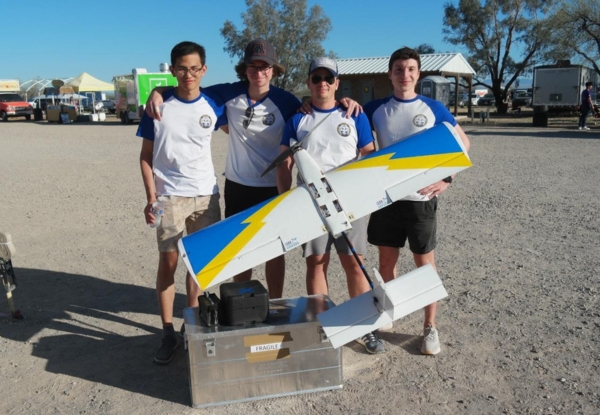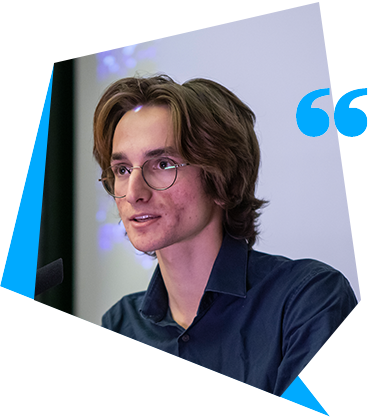< back to articles
RadiOwl project in the running for the Design, Build, Fly 2023 competition
Published on
Marien GIORDANI, President of the Supaero Drone Section club in 2023 and leader of the RadiOwl project, participated with its team in the Design, Build, Fly competitionwhich consisted in the design, manufacture and flight testing of an aircraft subjected to several missions on the theme of “Electronic warfare”. in TUCSON from April 13 to 16, 2023. He tells us about their experience.

What did your project involve?
Our project involved a team of fifteen ISAE-SUPAERO students taking part in the Design, Build, Fly competition, the largest student aeromodelling competition (850 students this year), held in Tucson, Arizona, from April 13 to 16. We had 6 months to produce a design report, to be judged by a panel of judges, for an aircraft to perform 3 in-flight missions and one ground mission, graded on performance, according to a set of specifications. The project was proposed by one of the club’s students to first-year students in September. He knew that a team from ISAE-SUPAERO had taken part 4 years ago and wanted to try again, trying to improve our ranking.
How did the competition go?
Marien Giordani

We went to Arizona for 4 days and came 37th out of 99 teams. We came close to matching the score of the previous team, who had reached 36th place. This failure is relative, as the performances of the other teams vary from year to year. There were some very high-performance aircraft this year. We have established our strengths and weaknesses, so that we can pass on this knowledge to future teams from the School (or from France!) who will attempt this competition. We suffered from a lack of familiarity with the local organization, due to the lack of handover with the previous team. In particular, the way the competition is organized puts teams whose report scores are “too low” at a huge disadvantage, as their aircraft have less time to fly and therefore to improve their scores. Knowing this, we would have been more meticulous on this report and would have had more opportunities to show off our aircraft’s performance. This was the main drawback, because even though our team had seen its numbers dwindle as the project progressed, thanks to a great deal of hard work, we were able to finalize a report with a good score and an aircraft that performed well (and will still be available for training purposes for future club members).
What do you retain from this experience?
Funding from the Foundation will have enabled us to finance the travel of 4 club members to the competition, as well as some of the aircraft’s components. This project enabled all those involved to tackle engineering problems (design, adaptation) and gain experience.
In the short term, as president of the club that organized this project, I’d like to get future members involved in a project of this type (competition), as I think the experience gained is very useful for better understanding the management of future projects, and enables us to develop many new skills, whether in design or manufacturing techniques.
Taking part in this project has also reinforced the career plans of some team members to work in aeronautical design, or in drone regulation, for example.
